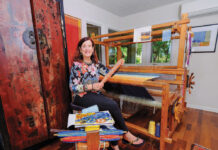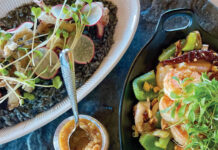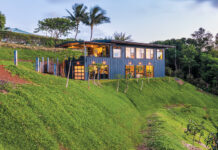Tenacious O‘hi‘a Lehua Trees Symbolize Hawaiian Resilience
By Serene Gunnison
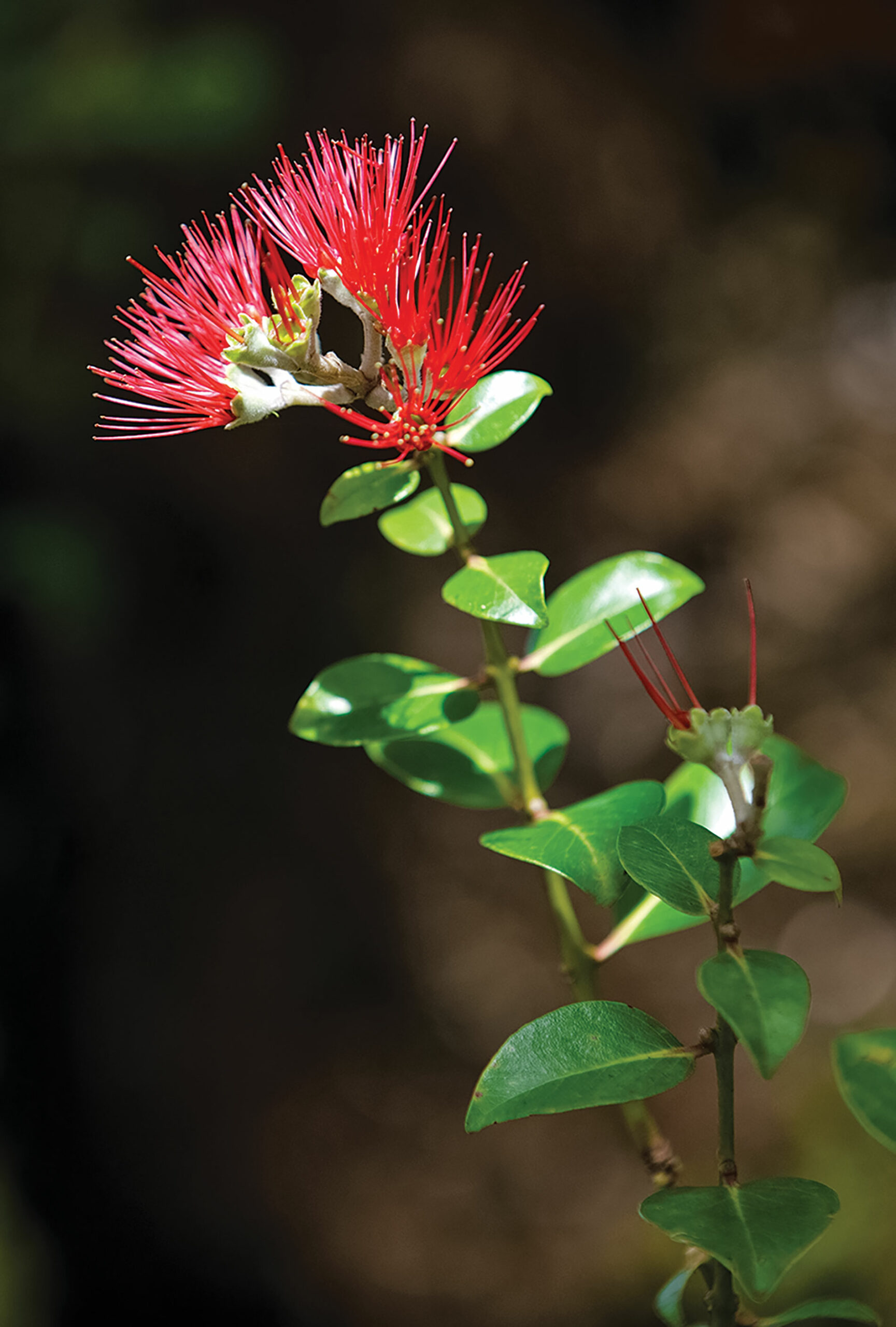
In 2022, the hardy o‘hi‘a lehua tree was named the official ‘Hawaii State Endemic Tree’ by Governor David Ige, who called the woody perennial a “symbol of Hawai‘i.” The selection was apt. O‘hi‘a lehua, which can develop into a towering tree or scraggly shrub, is a tenacious emblem of resilience.
O‘hi‘a trees are typically the first saplings to spring from fresh lava flows, their spindly stalks and vibrant, powder-puff blossoms erupting from the hardened earth with unstoppable force. The trees can withstand extreme drought and high winds and thrive in a range of climates, from boggy mountaintops to low-elevation lava plains. Today, o‘hi‘a is the most populous native tree in Hawai‘i, comprising nearly a million acres of forest across the state, including 80,000 acres on Maui.
The tree’s unbridled dominance has undoubtedly shaped Hawai‘i’s native ecosystem. O‘hi‘a lehua forests are primary habitats for a host of native plants and birds, including endangered Hawaiian honeycreepers like the ‘i‘iwi, which rely on the trees for nectar, insect prey and shelter. The tree is also commonly used in landscaping.
In addition to o‘hi‘a lehua’s environmental significance, the tree is inextricably woven into the fabric of Hawaiian culture. Ancient Hawaiians turned to o‘hi‘a lehua for a variety of uses, from medicinal and spiritual to mechanical, prompting mentions of the tree in countless oli, mele and mo‘olelo (chant, song and legend).
Despite centuries of unwavering fortitude, the ‘hi‘a lehua is amid a concerning plight: rapid o‘hi‘a death, also called ROD. First identified in 2014, ROD is a fungal pathogen that has the potential to kill healthy o‘hi‘a trees in days to weeks. ROD is prominent on Hawai‘i Island, with additional cases discovered on Maui, O‘ahu and Kaua‘i. The disease has the potential to wipe out entire swathes of otherwise healthy o‘hi‘a forests.
There is no known cure, but the public can help prevent the spread by avoiding transporting ohi‘a materials and cleaning gear, tools, shoes and clothes before and after entering forests.
On Maui, lovers of o‘hi‘a lehua can ogle at the trees from a safe distance at Hosmer Grove in Haleakala National Park. Follow the short nature trail to the gorge overlook, where you can watch scarlet ‘i‘iwi flit around the o‘hi‘a lehua’s red and yellow blossoms. If treated with care, these remarkable trees will remain a vital part of Maui life for generations to come.
Jordanne Perkins: Painting From the Heart
by Cynthia Sweeney
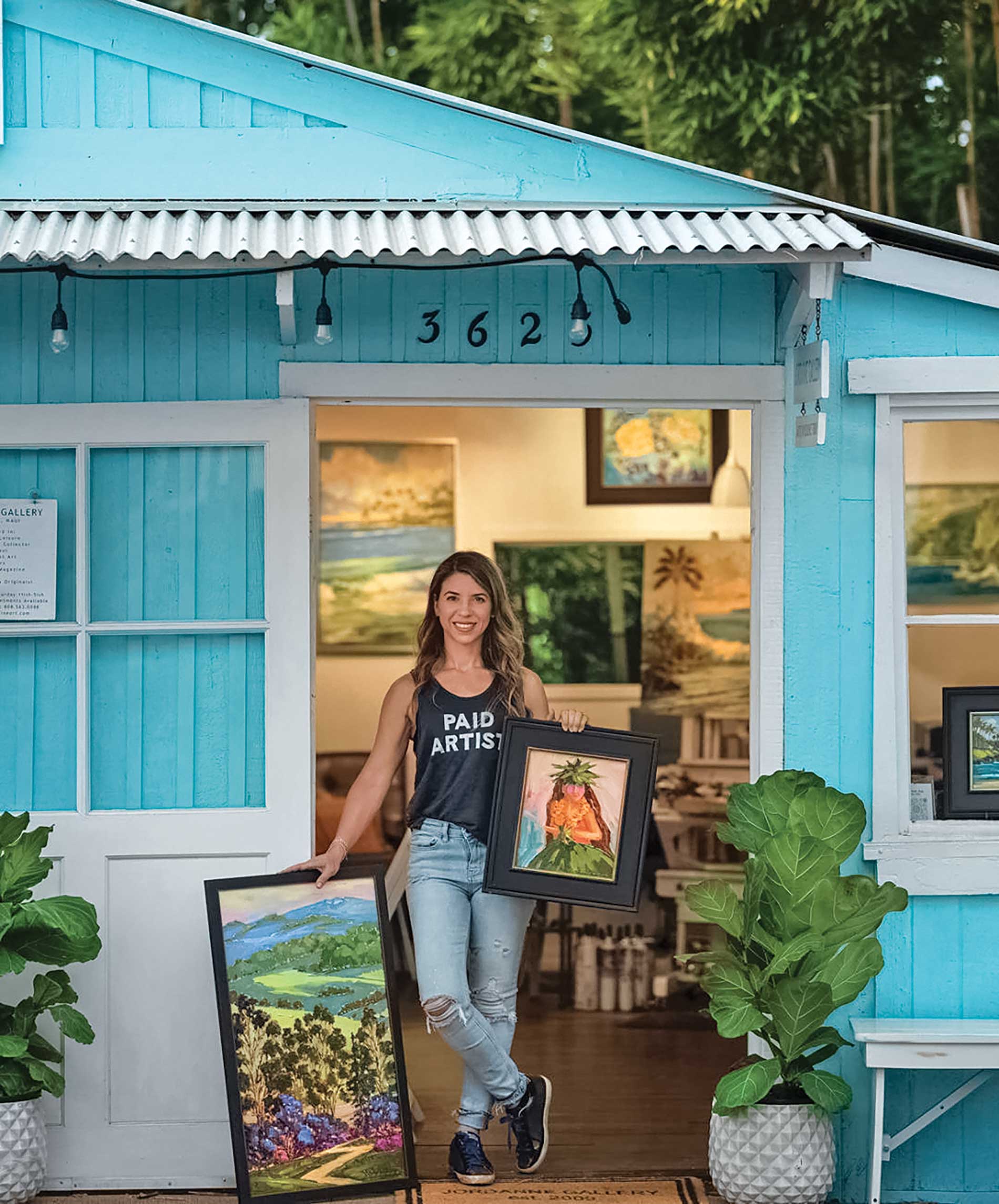
Jordanne (Weinstein) Perkins paints to tell a story. Whether cows grazing in a green pasture, the sand and the waves at the beach, or even light that hits an Upcountry road, the everyday ordinary speaks to her soul. She also paints with an intentional aspect of positivity, and as a result, her work resonates with people on an emotional level.
“I have people cry because it brings back the emotion of their own personal story for them, whether it happened in Maui, or reminds them of a family member,” she said. “I’ve been told so many times that it just brings up joy and happiness every time they look at my paintings.”
Things didn’t start out that way. Perkins was on track to become a successful graphic art director in her home state of New York, when a trip to Hawai‘i with her mother changed everything. Ready to return home, at the airport on Lana‘i, her mother encouraged her to stay on the island for a little while longer.
“I said ‘Mom, I didn’t go to art school for five years to become a beach bum,’ ” Perkins said, but she decided to stay anyway. Living meagerly on her savings, she quickly found inspiration – and the time – to paint. To her surprise, interest in her work from visitors and locals grew, as did her confidence. Perkins’ gold leaf pineapples were a hit and “started selling like crazy.” She opened a gallery on Lana‘i in 2006, and her gallery in Makawao in 2009. Today, she has many collectors and repeat customers.
“It’s mind-boggling. Even though I’ve been in this business for 20 years, I still feel so blessed every time I sell a painting,” she said. Perkins works only in oil and her style is reminiscent of the classic impressionists, but with a contemporary edge. She painted plein air exclusively for 10 years, until her two children were born. Then, “For five years I didn’t see the sunset,” she said.
Living on an island and painting the same scenes repeatedly, Perkins said she has to push herself. But as the seasons change, the light changes, and brings up a new story of living in paradise, and what she and others love about island life. When people ask her which painting is her favorite, Perkins responds, “The last painting I painted. With every single painting I get to fall in love. It’s all about personal experience, as well as dream-like desires.”
Jordanne Gallery 3625 Baldwin Ave., Makawao | jordannefineart.com | (808) 563-0088
Tiny Bubbles in The Brine
Blowing bubbles may play role in whale romance
By Benton Sen
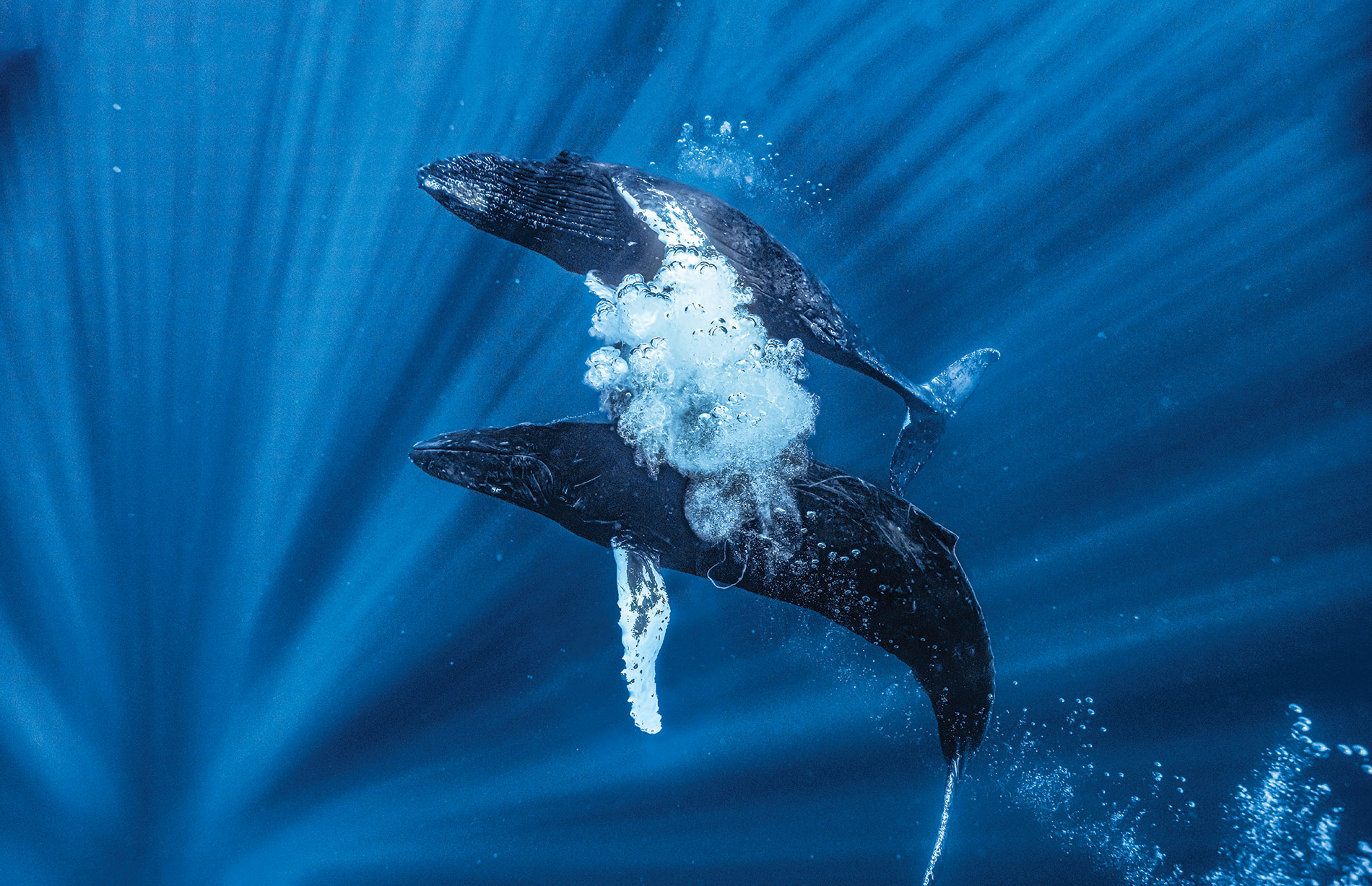
Leaping from the water, breaking the ocean surface with majestic grace, as many as 12,000 humpback whales navigate their way from the Pacific Northwest, Alaska and beyond to Hawaiian waters each winter. Mysterious and powerful, these 40-ton gentle giants come here to breed and give birth – and to blow bubbles.
Though humpbacks have long been known to blow “bubble nets” as a hunting tactic to trap fish, Maui-based Whale Trust researchers recently released a paper suggesting the whales might also use bubbles in a romantic context. While filming underwater in the Au‘au Channel off West Maui, a Whale Trust research team observed frolicking male humpbacks blowing bubbles onto the genitalia of a female humpback. The female tolerated this behavior and even seemed to aid in the reception of the bubbles.
Whale Trust co-founder Flip Nicklin first documented this whale bubbling phenomenon 20 years ago. “I had a little video camera, and the whales were moving slow enough so that I could keep up with them,” Nicklin said. “I was able to photograph a male whale blowing bubbles, going under the female floating on the surface.”
A renowned National Geographic photographer, Nicklin has spent nearly half a century swimming with whales in the wild, taking their pictures and telling their stories. Still, much about humpback whales remains a mystery – for instance, no one has ever seen humpbacks mating. On a scale of one to 10, Nicklin said, what we know about whales is less than one.
All the same, the Whale Trust team has a couple of theories on what this bubbling is all about. One theory posits that the bubbling activity stimulates the female prior to mating, or that it helps release chemical cues that signal to males her readiness to mate. Another theory suggests the female may already be pregnant and about to give birth, in which case the bubbles could stimulate the release of hormones necessary for the birthing process.
Like the humpbacks, Nicklin spends each winter in Maui, where the shallow, calm and protected waters make it one of the best places for watching and studying whales. When humpbacks make their journey to Maui, the first ones show up sometime in October and stay as late as May. In Hawai‘i, they come and go like tourists. Asked about the best way to photograph whales, Nicklin smiled: “You just spend as much time with them as you can and keep remembering that when you are not getting great pictures, you are still in Maui.”
Click here to subscribe to Maui Nō Ka ‘Oi Magazine

